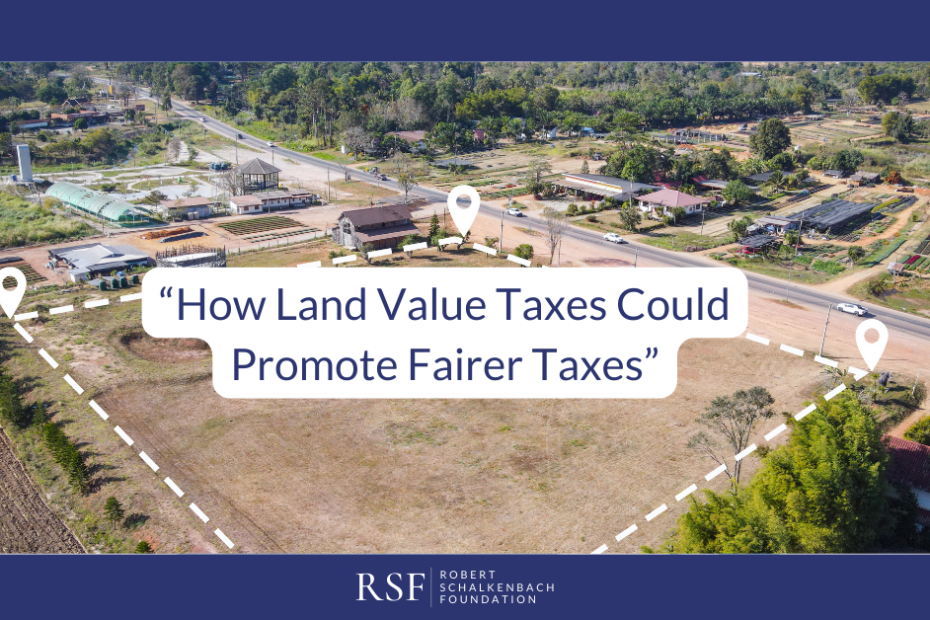Taxes influence behavior. When you tax cigarettes and alcohol, people are less likely to buy them. When you tax property and buildings, people are less likely to invest in improving current properties and developing new ones. This leads to run-down buildings, empty lots and underutilized land which contribute to a worsening housing crisis.
In America, ad valorem real estate taxes are the standard. Property taxes are currently based on the total value of a property which tends to discourage people from adding value by improving their properties, unless they are willing to pay a premium. For example, if a property owner adds a new room or builds a new apartment building, the property becomes more valuable, but the owner’s tax rates will increase. In New Mexico, land is arbitrarily assigned one-third of the total assessed value, while the building is assigned two-thirds.
In some cases, property owners are better off not improving their properties because they would rather not pay a higher property tax if they cannot claim more rental income. This ultimately impedes tax revenue for the community and reduces the potential to improve local amenities such as parks, libraries and city services. In small towns or suburban areas, this can lead to underutilized land and empty lots which often signal declines in neighborhoods.
In some states, such as California, laws like Proposition 13 tax properties based on their original purchase price, not their current value. This makes it cheaper for landowners to hold onto land, even when property values continue to rise in the state. According to Zillow, there are over 25,000 available vacant lots in California. Meanwhile, the California Department of Housing and Community Development says that the state needs to build 2.5 million units by 2030 to address the housing shortage.
But what if we taxed land more than the improvements on it?
Land value tax is a system that aims to tax the value of land itself rather than the property. This idea was proposed by 19th-century economist Henry George, whose book, Progress and Poverty argued that poverty was a result of social and economic structures, and could be alleviated through policies such as land value taxation. Today, some cities in the U.S. have adopted a tax system called the split-rate tax system, which is a type of land value tax.
In Detroit, Michigan, city officials are proposing a shift away from a 2% tax rate on the assessed value of properties and reduce it to 0.6%. At the same time, they plan to introduce a new land value tax that is 11.8% of the value of the land itself, creating a “split-rate tax” because it splits the tax between the land and the buildings. Factors that impact the value of land include public neighborhood amenities, schools, access to transportation, weather, market demand and more. Economists have proposed that if 90% of taxes come from the land’s value and 10% from the property itself, average property taxes will remain close to the same.
Detroit’s goal is to encourage property owners to develop their land more efficiently and to discourage them from holding onto vacant land without using it. Ultimately, it could help Detroit generate more revenue and improve its neighborhoods.
This is not a new idea. Some Pennsylvania cities have been using the split-rate tax system since 1913, including Pittsburgh. Today, nearly 20 cities in Pennsylvania have implemented the policy. Evidence from multiple studies have shown that after the split-rate tax structure was implemented, commercial investment increased in its downtown areas, permits increased, and cities experienced a reduction in suburban sprawl. This also contributed to significantly lower vacancy rates and an increase in the housing stock. Ultimately, it encouraged property owners and developers to get the most out of their land, rather than leaving it vacant. It also favored building multiple units that could house more people and offices, instead of single-family houses.
In addition to promoting developments and reducing underutilized land, a land value tax system also reduces the speculation of land and property, or the practice of buying and holding onto land and property primarily for the purpose of reselling it for profit rather than to live in or use. According to Freddie Mac, nearly 6% of all 2022 home purchases were by institutional investors and instant buyers—individuals who buy a home with intentions to renovate it and sell it for profit. A land-value tax system would reduce the speculation of land because those who do not use their land productively would pay a high price.
Unlike traditional property taxes, land value taxes would focus on taxing only the unimproved value of the land, not the building or structures on it. This means that holding on to unused or unoccupied homes becomes more costly over time. Amidst a worsening housing crisis, it’s unfair that investors are making profits from houses that they don’t live in, while so many Americans are in need of an affordable home.
The old real estate adage is that the value of land depends on “location, location, location”. Much of that value is supported by public infrastructure and services. Switching to a land value tax will capture the value added by the community and encourage owners to build to “the highest and best use” of their land.
References
Overview of LVT from economist: https://hatethegame.substack.com/p/a-masterpiece-in-tax-policy
Prop 13 article, California: https://www.kqed.org/news/11700683/too-few-homes-is-proposition-13-to-blame-for-californias-housing-shortage
Detroit LVT Case Study: https://bipartisanpolicy.org/blog/detroit-mi-a-case-study-on-taxing-land-instead-of-property/
Introduction to LVT in housing crisis: https://www.vox.com/policy-and-politics/22951092/land-tax-housing-crisis
CA Housing Crisis Overview: https://calmatters.org/commentary/2023/03/housing-crisis-california-defies-politics/
The problem with 100% land value tax: https://www.forbes.com/sites/modeledbehavior/2015/03/29/the-problem-with-100-land-value-taxes/?sh=713bc1385349
Pennsylvania’s LVT case study 1: https://www.jstor.org/stable/3487258
Pennsylvania LVT case study 2: https://www.chicagofed.org/publications/chicago-fed-letter/2023/489
Investors share of the housing market: https://www.housingwire.com/articles/no-wall-street-investors-havent-bought-44-of-homes-this-year/#:~:text=The%20overall%20market%20share%20of,small%20mom%20and%20pop%20investors.

